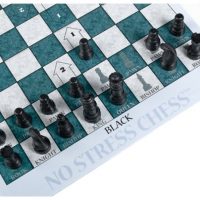
There is a drive to create a more inclusive gifted program in our schools. Is this one of the answers to a system that many say is failing the public or is it just another way to pacify those who desire to dilute education by promoting the notion that every child should be treated equal at the expense of the child’s individual needs? I will try and present an objective view of the pros and cons of implementing an inclusive program in gifted and talented education.
Support for the gifted has certainly seen many ups and downs since the 1950’s. The current program that seems to have many supporters is the Schoolwide Enrichment Model designed by Joseph S. Renzulli. This model can overwhelm some educators who are afraid of what they don’t understand or the idea of change. This model promotes the idea of including 15 to 20% of the student population from a talent pool. These students do not revolve in and out of the program but rather they revolve into and out of different types of and levels of services. This is referred to as “group jumping”, rather than “tracking” because the students are grouped based on common interests, tasks, projects, talents and skill levels. Below are services which can be a part of the Schoolwide Enrichment Model:
This first type of service involves an interest assessment. The teacher would build educational experiences around student interests rather than around the regular curriculum. These are called “enrichment clusters”. These clusters cut across grade levels and ability levels. Classroom teachers can also choose to take part in an enrichment cluster based on their own interests. These enrichment clusters can last a week or a month.
Another service is called “curriculum compacting”. This is when the teacher adapts the regular curriculum by either eliminating or streamlining work by moving faster. This makes the curriculum more challenging for the student and buys time for the teacher.
Added to the Schoolwide Enrichment Model is the popular Enrichment Triad Model which was designed to encourage creative productivity, These services include:
Type 1: General exploratory activities not covered in the regular classroom.
This is for all students and the students are chosen based on their area of interest.
A positive relationship with the classroom teacher is important as you are relying on the classroom teacher’s cooperation so that you may work with these students at a center in the classroom, for example. This type of instruction can also be used for starting an enrichment cluster. These activities should be hands-on activities that involve problem solving, discussion and debate. These lessons are planned in advance but remain flexible.
Type 2: Group training activities that teach research skills.
These activities should include process skills. These skills would include data gathering, communication, writing and thinking skills. These lessons are not planned in advance because they grow out of the students’ reactions and interests. The students can generate problems in which these methods can be applied. Some Type 2 lessons should be taught to a whole class, others should be taught in small groups based on interest.
Type 3: Individual and small group investigations of real problems.
This type of enrichment allows the students to become professionals as they develop products and services for an audience (parents, students, and people in the community). These are based on real problems with a personal frame of reference for the individual or group. The student or students want to bring some form of change in actions, attitudes, or beliefs, or they want to contribute something new to the sciences, arts, or humanities. The teacher changes from instructor to coach and mentor.
Also, in the Schoolwide Enrichment Model the gifted teacher works with the regular classroom teacher as a consultant who can provide direct or indirect services in the area of curriculum modification. This might look like compacting, or teaching strategies that promote thinking skills and problem solving.
At this point in education there is little collaboration between regular education teachers and gifted education teachers. Gifted education teachers often use a totally separate curriculum and might offer themselves up as a resource/consultant to the teachers at the beginning of the year but they are not often called upon to follow through on this offer. Kirschenaum stated “a consultants job is not an easy one especially since they rarely receive in-service or training (Haight, 1984)”. He also lists sources that discuss the classroom teacher’s pride and the problems that causes when they won’t ask for help due to not wanting to be seen as less than adequate. According to Kirschenbaum a good consultant needs to be will trained and have strong communication skills. “The major obstacle confronting the consultant is establishing expertise while simultaneously leading teachers to see that expertise as a resource rather than a threat or criticism”. (Kirschenbaum, 1999).
It seems changing the role of “teacher of the gifted” to “consultant and teacher of the many” comes with its share of criticisms. Parents and staff may perceive that a change in student service delivery is taking away from the quality of existing gifted programs and many fear that those programs may become watered down (Kirschenbam, 1999). It also appears some models which include more children don’t include a higher-level program for identified gifted students. Rezulli (1994) states that we can use consultants or enrichment specialists to make more informed decisions about the talent cluster, and special services (Kirshenbaum, 1999).
John Feldhusen (1998) believes it is immoral to identify a large number of children as ungifted. Meaning, by labeling some children as “gifted” we are labeling the others as “ungifted”. He goes on to say that an extensive survey of classroom practices shows teachers are not teaching to the appropriate level for their gifted and talented students and the extra instruction they received outside of the classroom from their pull-out program was instruction that other students would also benefit from (Feldhusen, 1998).
Donald Treffinger (1998) proposes that talented be defined as the potential for significant, creative contributions or productivity in any domain of inquiry, expression, or action over an extended period of time. He believes talent is a result of characteristics of the person, the context in which the person functions, the area of expertise, and the operations used in being expressive or productive. He thinks the schools need to find the talent in each child, address it, but not label the student as “truly gifted”. Many school systems across the nation are currently reevaluating their program based on this type of information.
So, first we were told to identify the gifted and work with them based on their potential but now we are told to find the talent in every child and work with them all in the name of equality. Is that not what every classroom teacher is trained to do? Not all students are created equal. Some students are brighter than others and they require more stimulation. Other students can barely handle the stimulation in the regular classroom.
To complicate the picture, there are many articles which state teachers are not meeting the needs of their gifted and talented students in the classroom. Unfortunately, there are teachers in this country that don’t meet the needs of their students; we all know there are inadequate teachers in public education. By the same token, there are many wonderful teachers, such as the many I have worked with directly who meet the needs of their high ability students.
I know the third grade teachers I once worked with used many thinking strategies and problem solving techniques. They offered their students choice, gave time for research, and the creation of products. Most of the curriculum was also integrated around a monthly theme. On Fridays we would “spiral” and rotate the students through our rooms so they could experience a hands-on activity that reviewed skills already taught in an in depth way.
Granted, as a whole, we are not meeting the needs of our youth but it is not just in the area of gifted and talented education. Behavior problems are on the rise, the public claims students with behavior disorders are not having their needs met either. We must not forget the students that fall through the cracks of the system with dull-average IQs, they too are not having their needs met. A program designed to find the “talent and gifts” in all students is not going to be a cure-all for what ails this society. The philosophy of the Schoolwide Enrichment Model is relevant and valuable, but how it is implemented is very important.
Classroom teachers need to not feel threatened by a consultant visiting their class. It would be easy for some of our finer teachers to become offended at the accusation that they are not providing for their high ability students. It may be beneficial to assist teachers in becoming more aware of all that they are already doing to meet these student’s needs. This could be done through brain-storming sessions. Teachers and parents also need to feel they have some influence over a new situation by providing input and asking questions. It often comes down to “but how does it affect me?”
So for many, the solution may be to define and develop a gifted consulting role in their school so that the classroom teacher and consultant will be able to accomplish more for children as a team, rather than functioning autonomously. Perhaps there is truth to be found in the thought that the whole (team) is more than the sum of its parts.
(First Published by Stacia Garland at the University of Kansas 1999)
Update from Neag Center for Gifted Education and Talent Development: “The Schoolwide Enrichment Model and its predecessor, The Enrichment Triad Model, have led to the development of an exciting new technology-based learning system. The Renzulli Learning System is an on-line program matching students’ interests and learning styles to enrich and challenge their learning opportunities.”
Bibliography
Boston, Bruce, Developing Elementary and Secondary School Programs.
The Council for Exceptional Children, 1975.
Colangelo, Nicholas and Gary Davis, Handbook of Gifted Education.
Allyn and Bacon, 1997. ISBN 0205260853 Every teacher should own this book. It is easy to read and packed with useful information.
Feldhusen, John F., Programs for the Gifted Few or Talent Development for the Many? Phi Delta Kappan, June 1998. This is an excellent journal .
Kirschenbaum, Robert J., Dorothy Armstrong, Mary Landrum, Resource Consultation Model in Gifted Education to Support Talent Development in Today’s Inclusive Schools. Gifted Child Quarterly, Winter 1999.
Renzulli, Joseph S. Schools for the Talent Development: A Practical Plan for the Total School Improvement. Creative Learning Press, 1994.
Renzulli, Joseph S. Systems and Models for Developing Programs for the Gifted and Talented. Creative Learning Press, 1986.
Treffinger, Donald J. From Gifted Education to Programming for Talent Development. Phi Delta Kappan, June 1998.




Wonderful Article! This content is very helpful and easily understandable to everyone. Thanks for sharing.